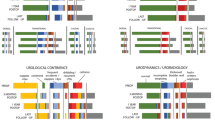Abstract
Congenital lumbosacral lipomas can be responsible for progressive defects. The general feeling is that tethering of roots, filum, or cord probably explains this evolution, and that untethering of these structures could prevent late deterioration. Like the vast majority of neurosurgeons, we too have routinely and systematically operated on lumbosacral lipomas, even in the absence of neurological deficits. This policy stemmed from our belief that spontaneous neurological deterioration was frequent, recovery from preoperative deficits rare, and surgery both efficient and benign in nature. After 22 years of experience, we felt that it was necessary to review our series of 291 lipomas (38 lipomas of the filum and 253 of the conus) operated on from 1972 to 1994. To reassess the value of pro-phylactic surgery, we attempted an accurate evaluation of (1) the risk of pathology, (2) the risks involved in surgery, (3) the postoperative outcome with respect to preoperative deficits, and (4) the postoperative outcome in asymptomatic patients at 1 year and at maximum follow-up. Special attention was paid to 93 patients whose postoperative follow-up was more than 5 years (average 8.7, median 8, range 5–23 years). Of these 93 patients, 39 were asymptomatic preoperatively (7 with lipoma of the filum and 32 with lipoma of the conus). Lipomas of the filum and of the conus are entirely different lesions and were studied separately. In 6 cases prenatal diagnosis had been possible. The mean age at surgery was 6.4 years. Low back skin stigmata were present in 89.4% of cases. Preoperative neurological deficits existed in 57% of the patients and were congenital in 22%. Clinical signs and symptoms recorded were pain in 13.3% of the patients and/or neurological deficits affecting sphincter (52%), motor (27.6%) and sensory (22.4%) functions. Deficits were progressive in 22.4% of cases, slowly progressive in 58.8% of these and rapidly progressive in the remaining 41.2%. In 36 patients (13.2%) the lipomas were seen to grow either subcutaneously or intraspinally. Among these patients, 21 were infants, 2 were obese adolescents, and 10 were pregnant women. The metabolism of the fat within the lipomas was studied in 11 patients and found to be similar to that at other sites. Lipomas were associated with various other malformations, either intra- or extraspinal. These associated anomalies were rare in the case of lipomatous filum (5.2%) but frequent with lipomas of the conus, except for intracranial malformations (3.6%). Therapeutic objectives were spinal cord untethering and decompression, sparing of functional neural tissue and prevention of retethering. Procedures used to achieve these goals were subtotal removal of the lipoma, intraoperative monitoring, duroplasty, and sometimes closure of the placode. Histologically, lipomas consisted of normal mature fat. However, 77% of them also included a wide variety of other tissues, originating from ectoderm, mesoderm, or entoderm. This indicates that lipomas are either simple or complex teratomas. The results of the study are as follows. (1) Surgery was easy and safe when performed for treatment of lipomas of the filum (no complications), but difficult and hazardous in the case of lipomas of the conus (20% local, 3.9% neurological complications). (2) All types of deficit could be improved by surgery, which was beneficial in all cases of lipoma of the filum and 50% of cases of lipoma of the conus. (3) In asymptomatic patients long-term surgical results depended on the anatomical type of the lipoma. They were excellent in lipomas of the filum. In lipomas of the conus they were good in the short term but eroded with time. At more than 5 years of follow-up only 53.1% of the patients were still free of symptoms. (4) Reoperations were performed in 16 patients (5.5%), 5 (31.2%) of whom improved postoperatively, while in 7 (43.7%) progression stopped, in 3 (18.7%) deterioration continued and in 1 (6.2%) the condition was worse after surgery. (5) The natural history of the malformation, that is to say the risk of spontaneous aggravation, has only been evaluated in hospital in-patients, so that the true level of risk remains unknown. This means we cannot interpret the actuarial curve following surgery for asymptomatic lipoma of the conus. In conclusion, there are two different types of lipoma: lipoma of the filum, for which surgery is harmless and beneficial in both the short and the long term, and lipoma of the conus, for which surgery involves considerable risks and is of questionable benefit in the long term. This raises the question as to whether prophylactic surgery is indicated for patients with asymptomatic lipomas of the conus, and whether the outcome is any better than it would be if the lipoma were left to take its natural course. The lack of basic information remains a stumbling block to management of these patients. Until this is remedied, we are unable to recommend prophylactic surgery in patients with asymptomatic lipomas of the conus.
Similar content being viewed by others
Author information
Authors and Affiliations
Additional information
Received: 25 November 1996
Rights and permissions
About this article
Cite this article
Pierre-Kahn, A., Zerah, M., Renier, D. et al. Congenital lumbosacral lipomas. Child's Nerv Syst 13, 298–334 (1997). https://doi.org/10.1007/s003810050090
Issue Date:
DOI: https://doi.org/10.1007/s003810050090



